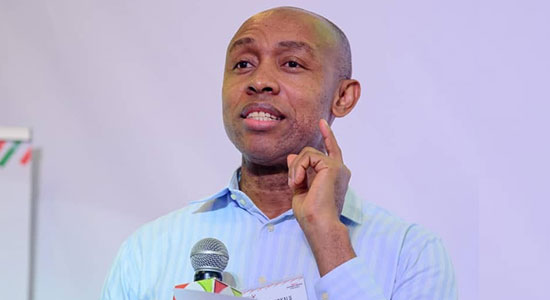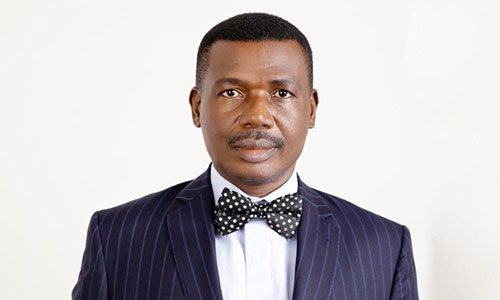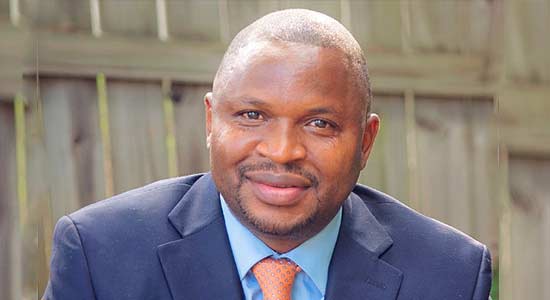An Innumerate Election Register Enables Nigeria’s Crisis Of Illegitimate Government

“Democracy depends on numbers.” Theodore Porter, “Democracy Counts: On Sacred & Debased Numbers” (October 22, 2020).
In twelve months, Nigeria will go to the polls for the ninth time in its history to elect a president. If anything has been established in the country’s history over the eight previous occasions since 1979, it is that the numbers that anchor democracy in Nigeria don’t bear any rational relationship to counting.
On Sunday, 4 June 2017, the Chair of the Benue State Independent Electoral Commission (BSIEC), John Tsuwa, called a press conference in Makurdi, the State capital, where he announced that the ruling All Progressives Congress (APC) had won all the positions contested in the Local elections that took place in the State the previous day. Mr. Tsuwa knew who had won the elections but not what number of votes they scored. He could not declare the votes scored by any of the candidates because, according to him, “the figures are not ready.”
This was not the first time Nigeria when an election management body had announced winners and losers in an election without counting. In the 2007 presidential election, Maurice Iwu, the Chairman of the Independent National Electoral Commission, INEC, declared a winner at a point when the results in only 12 states had been collated. As a matter of law, to declare results in a presidential election in Nigeria, you need to have collated at least 24 states. Till date, INEC does not have any breakdown of the votes in that election.
In Nigeria, we make a mockery of election results because the number of voters is always located between magic and voodoo. Take, for instance, the story of the Oranmiyan North 1 Constituency in the then Oyo (now Osun) State. According to 1986 Report of the Bolarinwa Babalakin Judicial Commission of Inquiry into the Federal Electoral Commission (FEDECO) “the 1979 voters register for the area contained 48,216 names. In 1983 the figures jumped to 214,500!” In four years, the voting population in this federal constituency had grown by an impossible 444.87%. The FEDECO Administrative Secretary, one Mr. Stephen Ajibade, had rigged the rolls.
Nigeria’s elections may have made some progress in 2011 and 2015 but this progress stalled by 2019. One area in which the country has consistently failed to make progress is in the management of election demographics.
One major flaw in the architecture demographic management in Nigeria is that it heaps responsibilities on INEC for failures that belong to other institutions. Despite the existence of a National Population Commission (N-Pop-C) and a National Identity Management Commission (NIMC), INEC remains saddled with primary management of demographics. This is where election rigging begins.
In 1999, Nigeria had 57,938,945 million registered voters. This rose by 4.98% or 2,884,077 voters to 60,823,022 million in 2003 and then by 744,014 voters or 1.22% to 61,567,036 in 2007. By 2011, the number of registered voters had climbed by over 11,962,964 to 73.53 million or 19.43%, representing an average yearly growth rate of nearly 4.86%, where previously it had grown by 1.25% in 1999-2003 and 0.31% between 2003-2007.
By 2015, the population of registered voters had fallen to 68.83%, a deficit of 4.7 million voters or 6.83%, representing an annualized rate of reversal of 1.71%. Yet, over the same period, Nigeria’s population had grown from an estimated 162.9 million to 181.2 million, an increase of 15.174 million or 11.23%, representing an annual growth rate of 2.8%. The 2019 voters register had 84.004 million registered voters, representing a growth of 15.17 million voters, or 22.05% at an average annual rate of growth of 5.51%.
Over the 20-year period since 1999, the population of registered voters in Nigeria grew by 26,065,055 million or 44.99%. By comparison, the country’s population in 1999 was estimated at about 115,766,000, rising by current estimates to about 199,039,000 in 2019, a growth of 83,273,000 or 71%.
Over the period, the rate of growth in voter rolls has lagged behind the rate of general population growth and not all the explanations for this unevenness are kosher. Quite clearly, it is the case that the country is still grappling with lack of systems for counting or managing demographic data. A reason given for the fall in registered voters from 2011 to 2015 is that INEC had to clean up the electoral register through the Automatic Fingerprint Identification Software (AFIS). This took most of four years between the primary data collection in 2010 and finalization of the electoral register at the end of 2014. In the three years to 2018, INEC claimed to have eliminated an additional 300,000 names from the roll. Whether this was enough to have adequately controlled for contamination of the electoral roll is another matter.
In Nigeria, however, you become eligible to vote not merely because you are on the register but also through possession of a Permanent Voters Card (PVC). The issuance of PVCs began in 2015 based on data primarily collected in 2010-11. Since then, the voter register has been updated episodically in continuing voter registration (CVR) exercises. The register for 2019 consolidated data from three cycles of elections going back some nine years. In 2019, however, it appeared that for the first time, every geo-political zone in Nigeria reported PVC distribution rates above 75%, with 13 states reporting PVC collection rates of over 90%. Katsina (98.69%); Taraba (97.30); Gombe (95.76%); Kebbi (95.13%), and Bauchi (94.84%) reported the five highest rates of PVC collection. The lowest were Ogun (71.36); Ekiti (73.25); Oyo (74.17%); Imo (74.91); and Osun (75.37%). The patterns are easily discerned from the numbers.
Impressive as they are, these numbers are mostly demographic impossibilities. With an annual death rate of about 1.5%, it would be reasonable to expect natural attrition in PVC collection rates year on year, especially as death rate is higher than annualized CVR rate. Natural attrition would probably at least suggest that over 85% of PVC rates would be implausible. Then, there would be provision for a dispersal effect attributable to internal migration and displacement by different causes, including violence. Add also inertia and internal dysfunctions and it would be evident that a credible ceiling for PVC collection would probably be somewhere about 75%.
Without a baseline of serviceable population figures, however, Nigeria’s electoral register is like Hotel California – you can check out whenever you like but you can never leave. In the absence of credible national birth and death records, INEC has no credible mechanism of expunging the dead from the rolls. Nigeria is the one country in which long dead people are guaranteed a right to vote but not the diaspora.
It is clear, therefore, that the biggest issue to manage in elections surely is demographics – identifying who can vote and designating where they can do so. INEC still can’t do this. The counting of eligible citizens of voting age should not ordinarily be a problem in a country where demographic management systems exist. In Nigeria, according to UNICEF, only 43% of children under five are registered. According to the best estimates, “only 13.5% of deaths in Nigeria were registered in 2007 which regressed to 10% in 2017.”
So, Nigeria’s elections have become the opportunity for those who run the electoral rolls to ratchet up numbers in places where they think they can procure attributions of uncounted votes and diminish those whom they fear may not grant them such. Among the Luo of Kenya, “Stronghold”, is the name of a child! This is how the rigging of the electoral roll is a natural point of crisis in every Nigerian election. This is unlikely to change in 2023.
So, in over 61 years of Independence, Nigeria has struggled to manage its public accounts. For its innumeracy of public accounts, the country has used everything from coercive instruments to commissions of inquiry whose reports have never been seen. Nigeria has also yet to hold uncontroversial census. To legitimize the outcome without addressing the underlying malfeasances, the country turns to census tribunals. For its habitual failure to count voters and votes, the politicians choose to capture the judiciary for purposes of election petitions. A country that defaults to judicializing its numbers in this way to paper over incapacities in counting imperils democracy and cannot account for anything.
A lawyer and a teacher, Odinkalu can be reached at [email protected]



